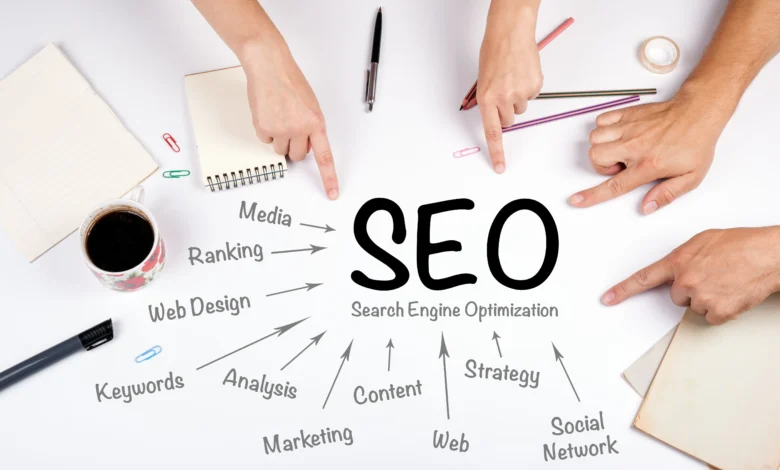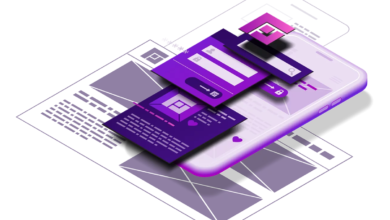
In the competitive world of digital marketing, creating a landing page that effectively converts visitors into customers is crucial. Optimizing your landing page content is essential to achieve this goal. This blog post provides practical strategies to optimize content for your landing page, ensuring higher engagement and conversion rates. We’ll cover essential elements such as keyword research, crafting compelling headlines, incorporating visually appealing media, and optimizing for mobile devices. By implementing these optimization techniques, you can create a landing page that delivers results and drives business growth.
Keyword research for landing pages
In the realm of digital marketing, landing pages serve as crucial touchpoints that determine a visitor’s decision to convert. To ensure your landing page excels in this role, thorough keyword research is paramount. It forms the cornerstone of an optimized landing page, guiding users seamlessly from search results to your desired action.
When embarking on keyword research for your landing page, begin by identifying the primary keywords that align with your business offering and target audience. These keywords should accurately reflect the intent of your landing page and be relevant to the products or services you provide. Integrate these target keywords strategically throughout your landing page, including the URL, page title, meta description, and body content.
While incorporating keywords is essential, it’s crucial to maintain a balance and avoid keyword stuffing. Overusing keywords can compromise the user experience and negatively impact your search rankings. Instead, focus on creating compelling and informative content that naturally incorporates relevant keywords.
To enhance your keyword strategy, consider incorporating long-tail keywords. These are more specific phrases that often reflect the precise search queries of users. By targeting long-tail keywords, you can cater to niche audiences and increase the likelihood of attracting highly qualified visitors to your landing page.
Finally, it’s vital to continuously monitor and analyze the performance of your chosen keywords. Utilize tools like Google Analytics to gain insights into user behavior, keyword rankings, and conversion rates. This data-driven approach allows you to refine your keyword strategy and optimize your landing page for maximum effectiveness.
By prioritizing keyword research and implementing these strategies, you lay the groundwork for a high-performing landing page that resonates with your target audience, drives conversions, and contributes to the growth of your business.
Compelling headline copy
Creating an effective headline is crucial for capturing the attention of your target audience and encouraging them to explore your landing page. Your headline should be concise, informative, and engaging, conveying the essence of your business offering and compelling visitors to take action.
Keep it short and sweet: Your headline should be brief and to the point, conveying your message effectively without unnecessary words. Aim for around 5-8 words to ensure readability and impact.
Incorporate relevant keywords: Integrate primary keywords into your headline to enhance its visibility in search engine results. However, avoid keyword stuffing and focus on creating a natural and engaging headline.
Create a sense of urgency: Incorporate words or phrases that create a sense of urgency or scarcity to encourage immediate action. Phrases like “Limited time offer” or “Don’t miss out” can be effective in driving conversions.
Personalize the headline: Address your target audience directly by using personalized language or addressing their specific pain points. This helps establish a connection and resonates with potential customers.
Test and optimize: Don’t settle for the first headline you come up with. Test different variations and monitor their performance to determine which headline resonates best with your audience.
Visual appeal and media
High-quality images, videos, and graphics are all powerful tools that can be used to engage visitors and convey information effectively. When used strategically, these elements can increase the visual appeal of your landing page, making it more likely to capture attention and keep visitors engaged.
Images can be used to break up text, add personality to your page, and illustrate key points. Choose images that are relevant to your content and that are visually appealing. Avoid using stock photos that look generic or staged. Instead, opt for original images that reflect your brand and resonate with your target audience.
Videos can be even more effective than images at capturing attention and engaging visitors. They can be used to demonstrate your product or service, provide tutorials, or tell your brand story. When creating videos, keep them short and sweet. Aim for videos that are no longer than two minutes long.
Graphics can be used to present information in a clear and concise way. They can be used to create charts, graphs, and infographics. When creating graphics, use simple fonts and colors that are easy to read and understand. Avoid using too much text in your graphics.
In addition to using high-quality images, videos, and graphics, you should also pay attention to the overall layout and design of your landing page. Make sure that your landing page is easy to navigate and that the most important information is featured prominently. Use white space effectively to create a sense of balance and avoid overcrowding your page.
By following these tips, you can create a visually appealing and effective landing page that will engage visitors and encourage them to take action.
Mobile-friendly optimization
In today’s digital landscape, where a significant portion of online traffic originates from mobile devices, optimizing your landing page for mobile users has become paramount. Ensuring a seamless and user-friendly experience on smartphones and tablets is crucial to maximizing conversions and maintaining a positive user experience.
To achieve mobile-friendliness, it is essential to adopt a responsive design approach. A responsive design ensures that your landing page automatically adjusts its layout and content to fit the screen size of the device being used. This flexibility eliminates the need for users to pinch, zoom, or scroll excessively, enhancing the overall user experience.
Optimizing images for mobile devices is another critical aspect of mobile-friendly optimization. Given the limited bandwidth and processing power of some mobile devices, it is advisable to compress images without compromising their visual quality. This optimization reduces loading times and prevents users from becoming impatient and abandoning your landing page.
Furthermore, it is crucial to avoid using Flash elements on your landing page, as they are not supported by many mobile devices. Instead, opt for HTML5-based alternatives that are compatible with a wider range of devices and browsers.
To facilitate seamless communication between your business and mobile users, consider incorporating click-to-call buttons. These buttons allow users to directly call your business with a single tap, eliminating the need for them to manually input your phone number. This convenience enhances the user experience and increases the likelihood of conversions.
By implementing these mobile-friendly optimization strategies, you can ensure that your landing page delivers an exceptional experience to users accessing it from various devices. This, in turn, contributes to higher conversion rates and fosters a positive brand image among your target audience.
Conclusion
Optimizing your landing page content for SEO Company Dubai is crucial for driving conversions and enhancing your online presence. By conducting thorough keyword research, crafting compelling headlines, leveraging engaging visuals, and optimizing for mobile devices, you can create a high-performing landing page that resonates with your target audience.
Remember to continuously monitor and analyze your landing page performance, using tools like Google Analytics, to identify areas for improvement and ensure that your landing page remains effective in achieving your business goals. Embrace a data-driven approach to landing page optimization, and you will be well-positioned to attract and retain customers in the competitive digital landscape.
By following these strategies and continuously refining your landing page content, you can elevate your SEO Company Dubai efforts and establish a solid foundation for your online success.
Frequently Asked Questions
Here are some frequently asked questions about optimizing landing page content for SEO Company Dubai:
- How do I choose the right keywords for my landing page?
When selecting keywords for your landing page, it’s crucial to consider relevance and search volume. Choose keywords that accurately reflect your business offering and are actively searched by your target audience. Tools like Google Keyword Planner or SEMrush can assist you in identifying the most relevant and high-performing keywords.
- How long should my landing page headline be?
Your landing page headline should be concise and attention-grabbing, ideally between 5 to 10 words. It should effectively communicate the essence of your business and compel visitors to take action.
- What type of visuals should I use on my landing page?
High-quality images, videos, and graphics can significantly enhance the appeal and effectiveness of your landing page. Choose visuals that are relevant, eye-catching, and aligned with your brand identity. Avoid using stock images that appear generic or irrelevant to your business.
- How can I optimize my landing page for mobile devices?
Mobile optimization is crucial for ensuring a positive user experience for visitors accessing your landing page from smartphones or tablets. To achieve this, adopt a responsive design approach, ensuring your landing page adjusts seamlessly to different screen sizes. Additionally, optimize images and videos for mobile devices and avoid using Flash elements.
- How do I track the performance of my landing page?
Tracking the performance of your landing page is essential for understanding its effectiveness and making necessary improvements. Tools like Google Analytics provide valuable insights into key metrics such as traffic sources, bounce rates, and conversion rates. Regularly monitoring these metrics allows you to identify areas for optimization and enhance your landing page’s performance.



